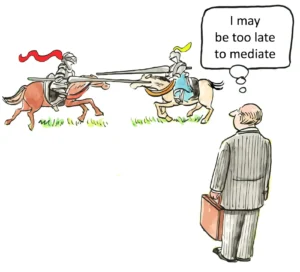How Connecticut Law Treats Serious Injuries from Car Accidents
Car crashes in Connecticut can leave victims facing overwhelming medical bills, physical pain, and emotional trauma. While minor fender benders may be resolved through insurance claims, severe injury cases often involve complex legal considerations. Connecticut’s laws outline specific procedures and standards for pursuing compensation when injuries lead to lasting impairment or significant financial losses. Understanding how these rules apply ensures victims protect their rights and recover what they need to rebuild their lives.
Legal Foundations for Serious Injury Claims
Connecticut follows an at-fault system for car accidents, meaning the person who caused the collision bears financial responsibility for the resulting damages. To recover compensation, an injured party must establish that the other driver acted negligently. This involves proving that the driver had a duty of care, breached that duty, and caused measurable harm. Many victims choose to talk with a lawyer from Trantolo & Trantolo to determine how these legal principles apply to their specific circumstances. Proving negligence requires proof such as police reports, witness testimony, and medical documentation.
Defining a “Serious Injury” Under Connecticut Law
Connecticut law does not use a single definition of “serious injury,” but courts and insurers generally recognize certain conditions as severe. These include fractures, traumatic brain injuries, spinal cord damage, permanent disfigurement, or any impairment that affects long-term function. Catastrophic injuries often exceed insurance policy limits, requiring victims to file personal injury lawsuits. Severe injuries can also trigger non-economic damages, which become critical elements of a claim.
Comparative Negligence and Its Impact on Compensation
Connecticut applies a modified comparative negligence rule when determining liability. This means that victims can recover damages only if they are less than 51 percent responsible for the crash. If a court assigns partial fault, compensation decreases proportionally to that percentage. For example, someone 20 percent at fault would receive only 80 percent of their total award. Understanding how comparative negligence affects recovery helps claimants present evidence that minimizes their share of responsibility and maximizes potential compensation.
Recoverable Damages in Serious Injury Cases
Victims of severe car accidents can seek both economic and non-economic damages. Financial losses include hospital bills, surgery expenses, rehabilitation costs, and lost income. Non-economic damages account for intangible suffering such as anxiety, depression, and chronic pain. Courts evaluate medical evidence and testimony to determine appropriate compensation amounts. In some instances involving reckless conduct, such as drunk or distracted driving, victims may also pursue punitive damages meant to punish and deter future misconduct.
The Importance of Medical Evidence
Medical records play a decisive role in proving the extent and cause of injuries. Emergency treatment reports, diagnostic imaging, and specialist evaluations help determine the importance of the crash’s impact on the body. Detailed documentation connects physical harm directly to the collision and rules out unrelated conditions. Consistent follow-up appointments also demonstrate the ongoing nature of pain or disability. Medical professionals can testify about future treatment needs, long-term limitations, and the likelihood of permanent impairment, all of which influence settlement calculations.
Insurance Obligations and Policy Requirements
According to Connecticut law, every driver is required to have a minimum amount of liability insurance. The state mandates a minimum of $25,000 for property damage, $50,000 for each accident, and $25,000 for bodily harm per person. Unfortunately, in situations involving serious injuries that necessitate surgery or prolonged rehabilitation, these limitations frequently fall short. In these circumstances, underinsured and uninsured driver coverage becomes crucial. Before pursuing additional claims through litigation, legal representatives make sure victims utilize all available coverage sources, including their own insurance.
Evidence That Strengthens a Serious Injury Claim
Strong evidence often determines the success of a personal injury case. In addition to medical records, victims should also preserve photos of the accident scene, documentation of vehicle damage, and records of communication with insurers. Witness statements help confirm the sequence of events, while accident reconstruction experts analyze factors such as speed, braking, and road conditions to determine the cause of the accident. Consulting a lawyer from Trantolo & Trantolo can help victims secure electronic data, such as traffic camera footage or vehicle black box information. Combining these materials creates a comprehensive case narrative that clearly demonstrates negligence.
Statute of Limitations and Filing Deadlines
According to Connecticut law, personal injury claims must be filed within two years of the date of the accident. In most cases, victims cannot seek compensation in court if this deadline is missed. However, there are several exceptions for children or situations where an injury is not discovered immediately. Timely action guarantees the availability of witnesses and evidence. By being aware of these deadlines, victims can make informed plans and maintain their right to compensation.
Role of Expert Testimony in Complex Cases
In severe injury claims, expert witnesses often clarify complicated medical or technical issues. Physicians explain the prognosis for recovery, economists estimate lifetime financial losses, and accident reconstructionists interpret collision mechanics. Expert analysis strengthens credibility and helps juries understand how the defendant’s actions led to long-term consequences. These professionals provide an unbiased perspective that connects factual evidence with legal arguments, reinforcing the victim’s position throughout the litigation process.
Prepared, Informed, and Empowered to Seek Justice
Understanding how Connecticut law treats serious car accident injuries empowers victims to make informed decisions about their recovery and legal strategy. Awareness of comparative negligence, evidence requirements, and insurance limitations ensures a stronger claim. Those who act quickly, collect comprehensive documentation, and seek knowledgeable legal guidance place themselves in the best position for fair compensation. The legal system rewards preparation, precision, and persistence, qualities that transform a complex recovery process into a successful pursuit of justice.













